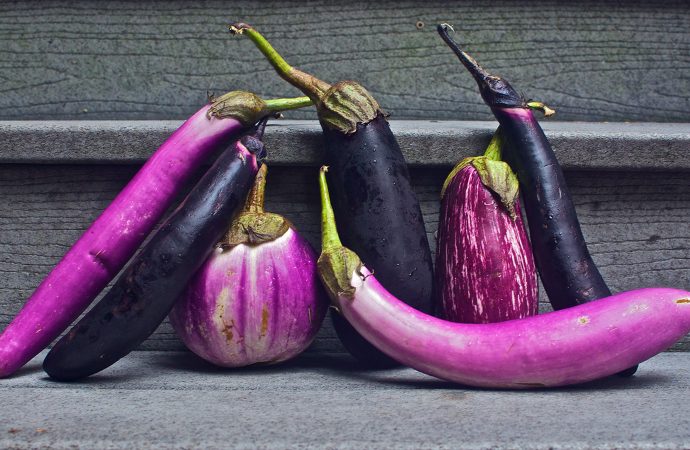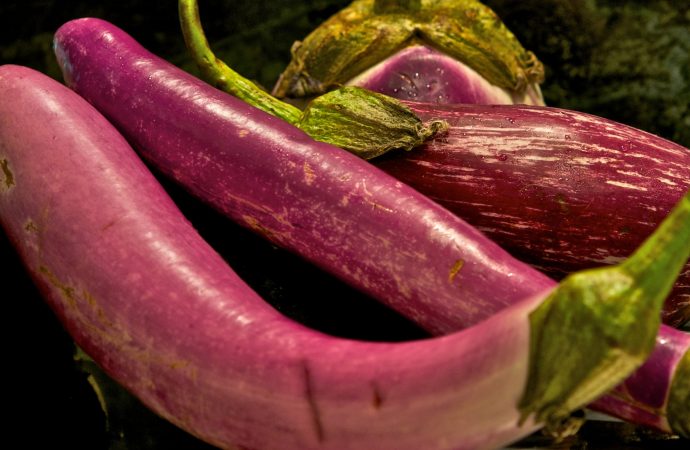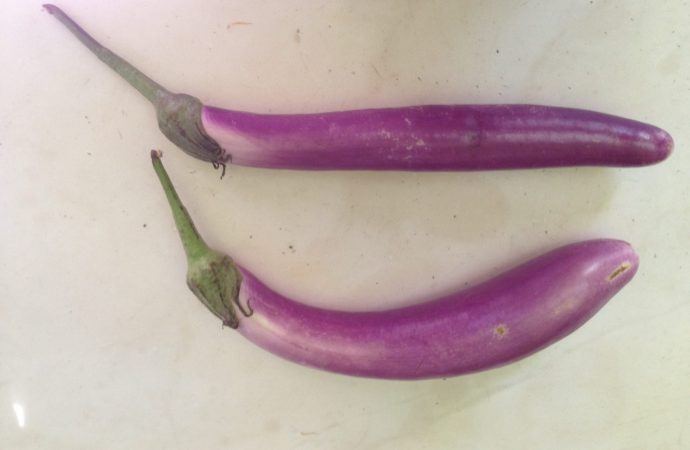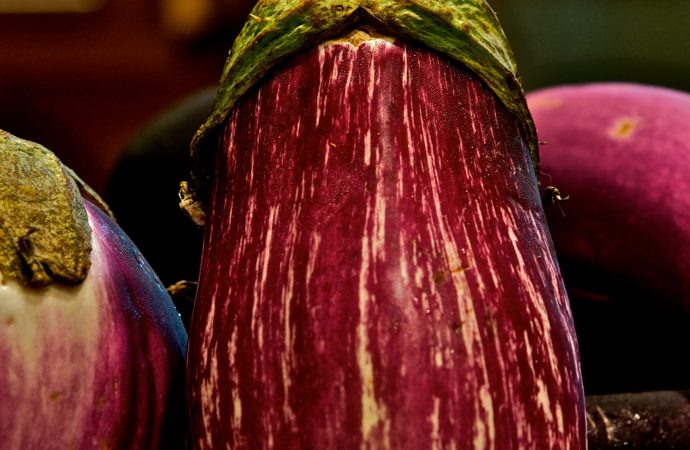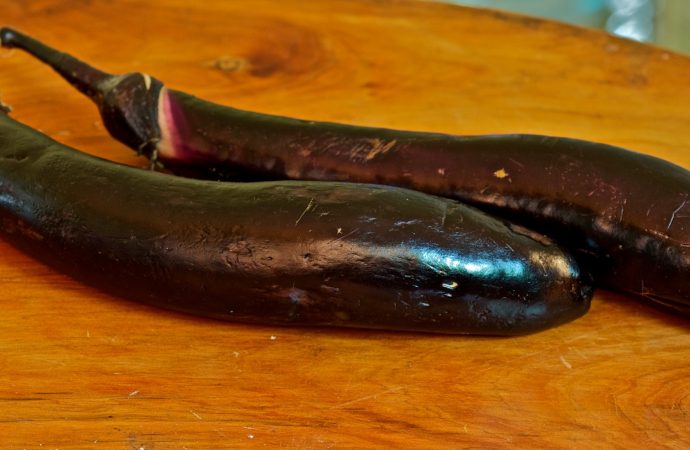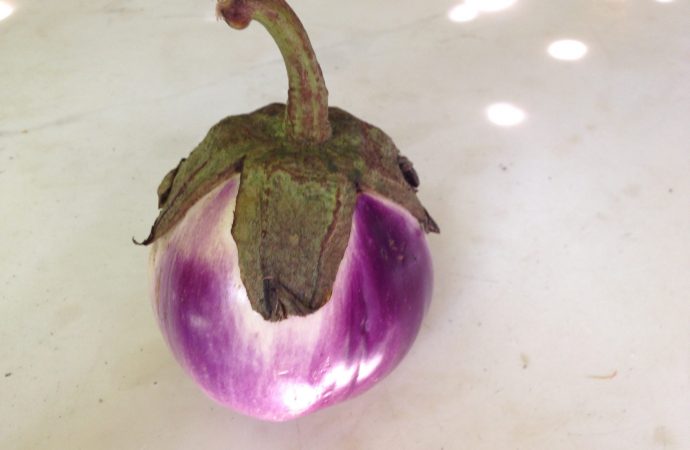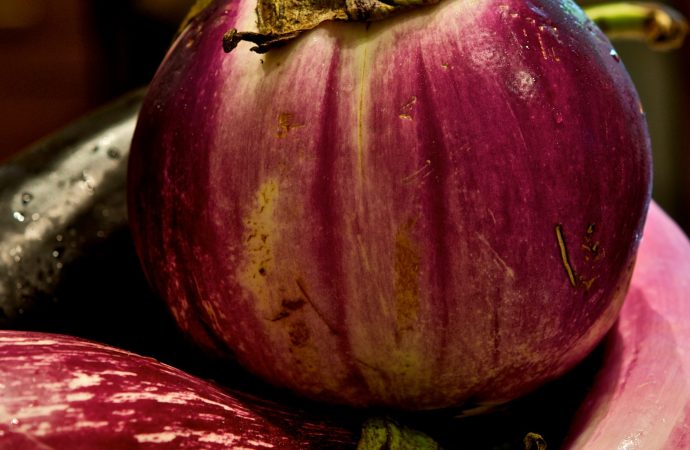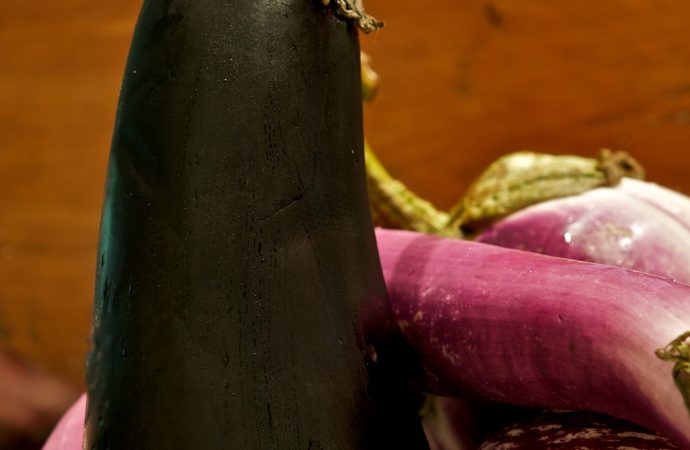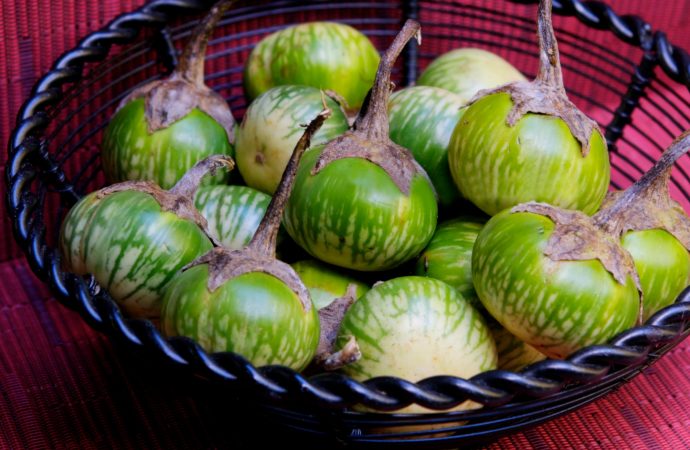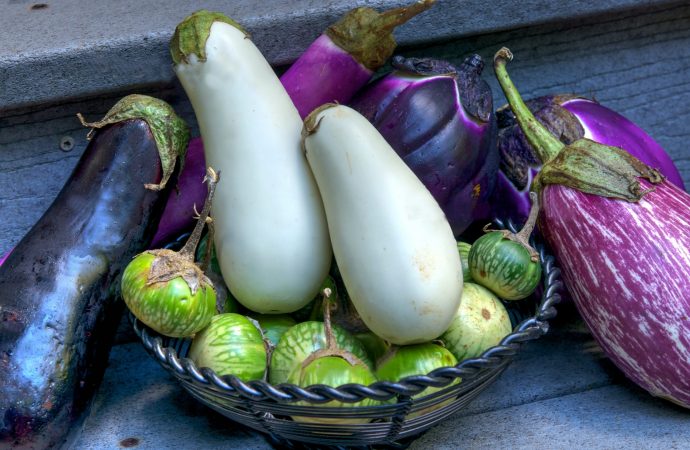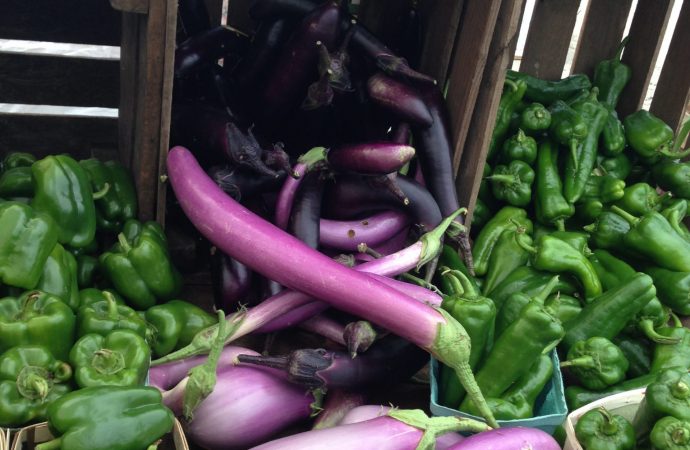Properly cooked eggplant is as plush as a pillow, as soft as custard.
Amy Thielen
My first introduction to eggplant was in Italian restaurants in Detroit, back in the days when you got dressed up to go downtown for dinner. Anyone who’s been to Detroit lately knows that was a long time ago. This also tells you how long I have been trying to learn to cook this sumptuous but perplexing vegetable. For years I was disappointed in the flavorful but greasy and indigestible restaurant offerings, whether eating Greek, Italian, Middle Eastern or Chinese food. Hundreds of home attempts were equally unpromising with eggplant cooked stingy and lean. However, I’ve progressed. Currently known as the queen of eggplant by friends and family, I’ll share what I’ve learned so far and hopefully shorten your journey learning to cook it well.
Thought mad, bad, despised and dangerous
Elizabeth Davis
Eggplants come to market in a wild array of shapes and hues, although the prepared dishes never retain this vibrancy of color. In large supermarkets you usually find the large, deep purple, pear-shaped vegetables associated with Italian food and dishes like Eggplant Parmesan. With the exception of recipes for caponata and Val’s eggplant pudding, I almost never use this variety. White eggplants are smaller and more firmly textured than the common purple eggplant even though they usually have more seeds. Both varieties have tough skin and should be peeled before cooking. All eggplant is extremely perishable. Look for ones with taught skin, no bruising or brown spots, firm texture and fresh-looking calyx.
Seven kinds of casseroles cooked with eggplants! Come let’s make supper and let’s enjoy before the worm comes and takes away our taste.
Sephardic song from the Ottoman Empire
I shop for eggplant in the ethnic markets serving Indian, Japanese or South East Asian communities. There I can find the long slim deep purple variety with a blue-black calyx known as Japanese or the light purple ones with a green calyx called Chinese. The Japanese eggplant has the more tender skin; otherwise there is little difference in taste between the two. These Asian varieties have less seeds, denser flesh, seem to absorb less oil, and are not as bitter or watery as the common supermarket varieties. Thai cooks favor small round green eggplants prized for their bitterness and often used to balance the rich coconut milk in curries.
At farmers’ markets I have found Rosa Bianca eggplants: round, with graduated color from light to dark purple. They are the best choice when a recipe calls for a so-called Italian eggplant. They are also great prepared simply; sliced horizontally, seasoned with salt and pepper, brushed with olive oil and grilled. Listada or Graffiti eggplant have striated white and reddish-purple skin. In addition to farmers’ markets, I often see good quality of these imported from Holland and sold at Whole Foods in the specialty produce section. Because this variety’s skin is particularly tough, they are great charred to smoky creaminess on the grill, perfect for baba ghanoush. Perhaps that’s why the variety is also nicknamed Lebanese eggplant. Once, in California, I found a Philippine variety: dense and tender, sweet and delicious. It looked like fat Japanese eggplant with a greenish blush showing underneath the purple. I saw this variety only one other time, at Fresh Farms on Touhy in Niles. I am always on the lookout.

